October 7th, 2015 The 1895 KU yearbook – called Annus Mirabilis (Wonderful Year) – includes a fun senior quiz, shown below. It’s unclear whether the answers listed were actually provided by members of the Class of 1895 or whether they were jokes written by the yearbook staff and attributed to their classmates. Especially humorous are the responses to the question “what does Miss Watson [the first and longest-serving professional librarian at KU] say when you whisper in library?”
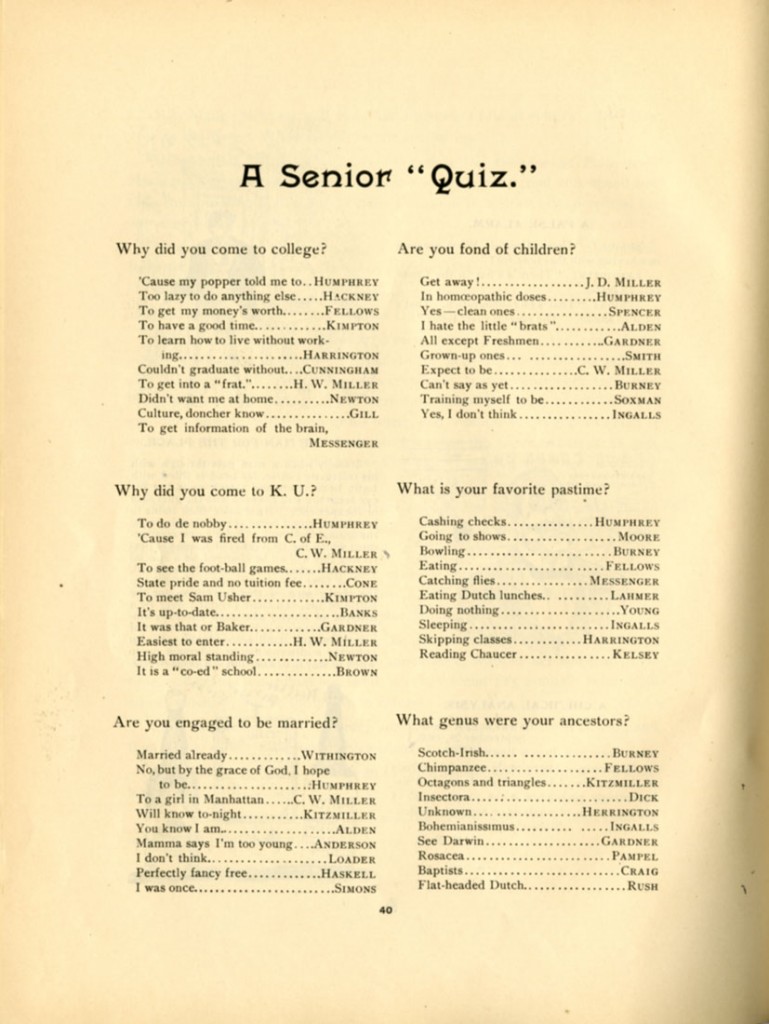
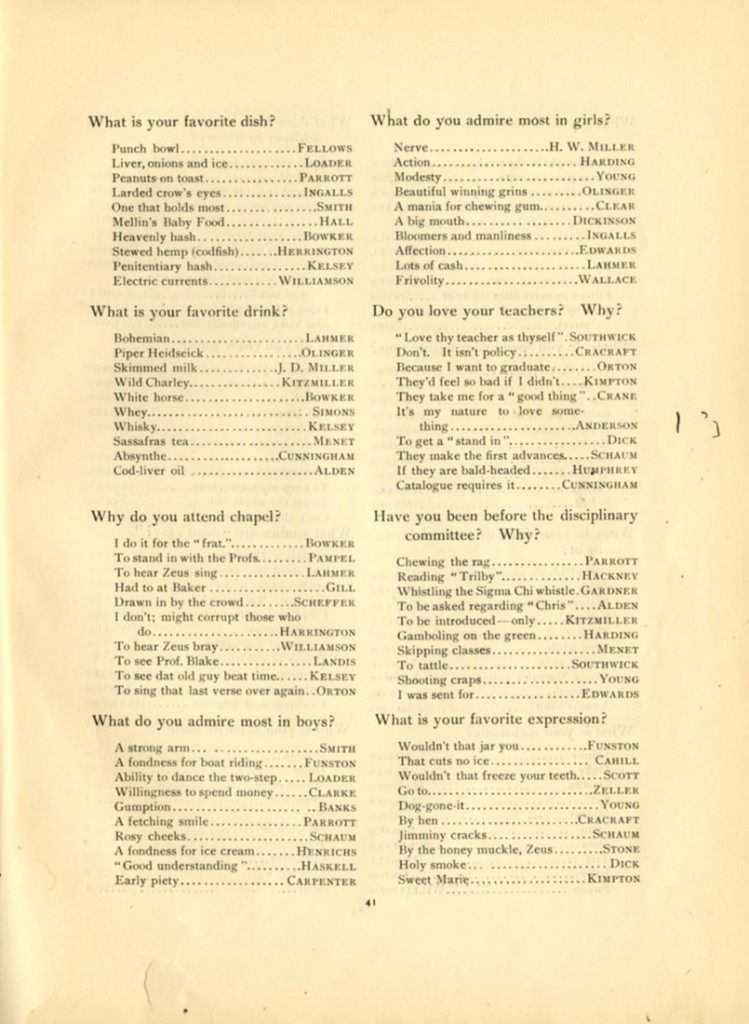
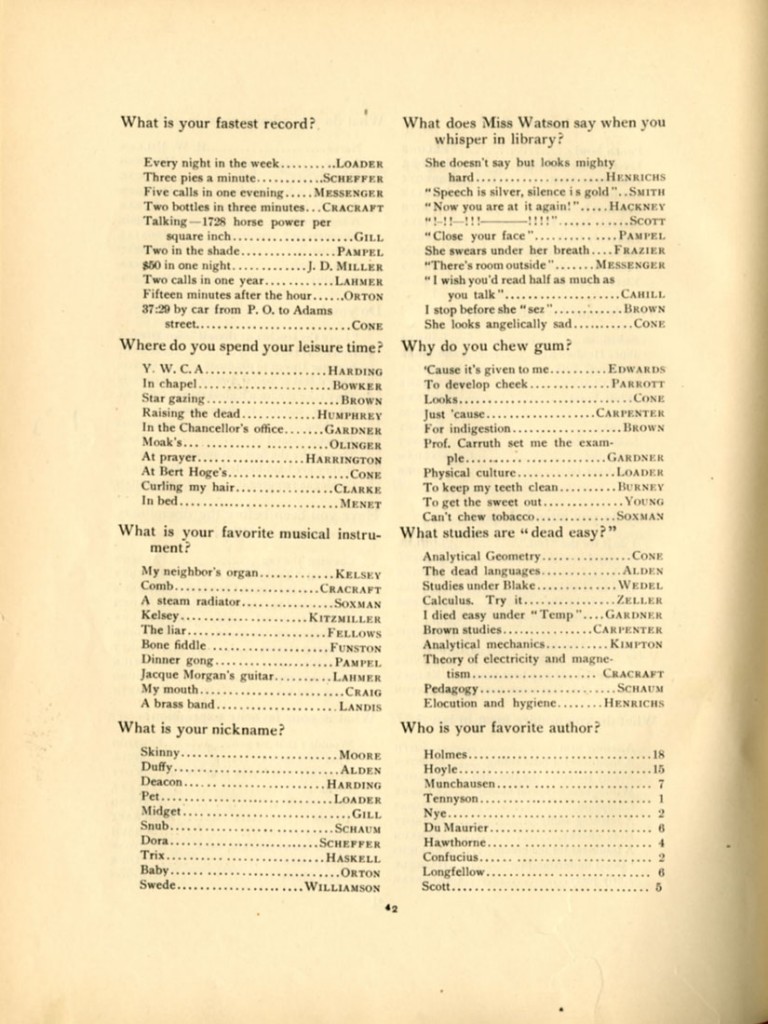
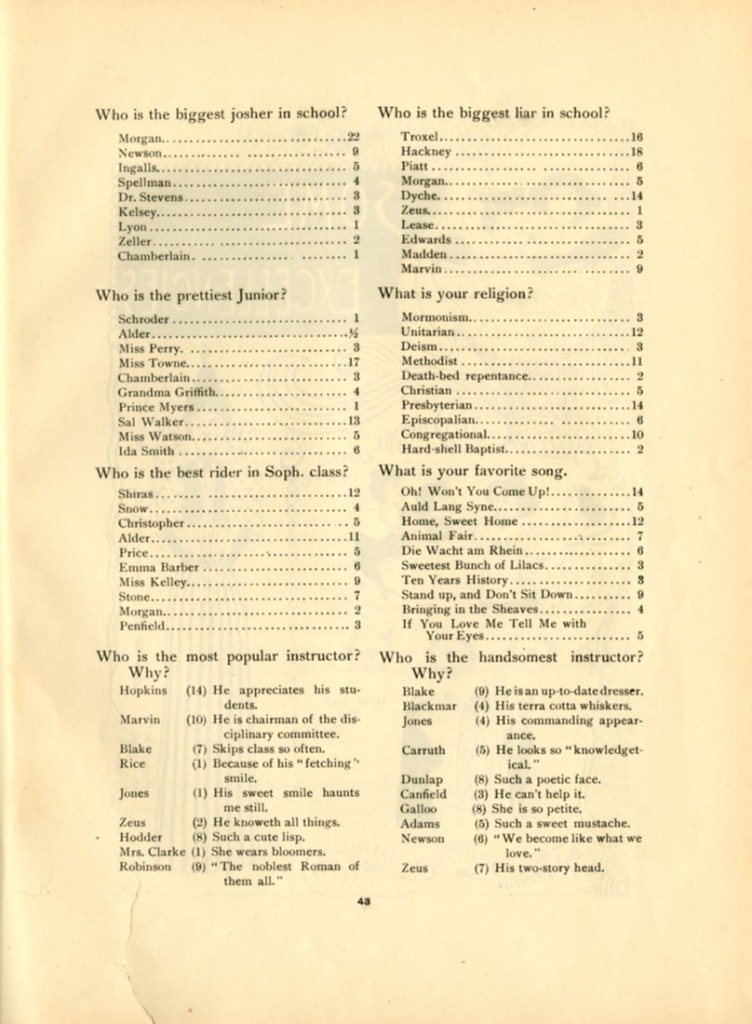
A senior quiz in the 1895 KU yearbook, Annus Mirabilis.
University Archives. Call Number: LD 2697 .J3 1895.
Click images to enlarge.
Caitlin Donnelly
Head of Public Services
Tags: Annus Mirabilis, Caitlin Donnelly, University Archives, University history, University of Kansas, Yearbooks
Posted in University Archives |
No Comments Yet »
October 1st, 2015 Each week we’ll be posting a photograph from University Archives that shows a scene from KU’s past. We’ve also scanned more than 6,700 images from KU’s University Archives and made them available online; be sure to check them out!
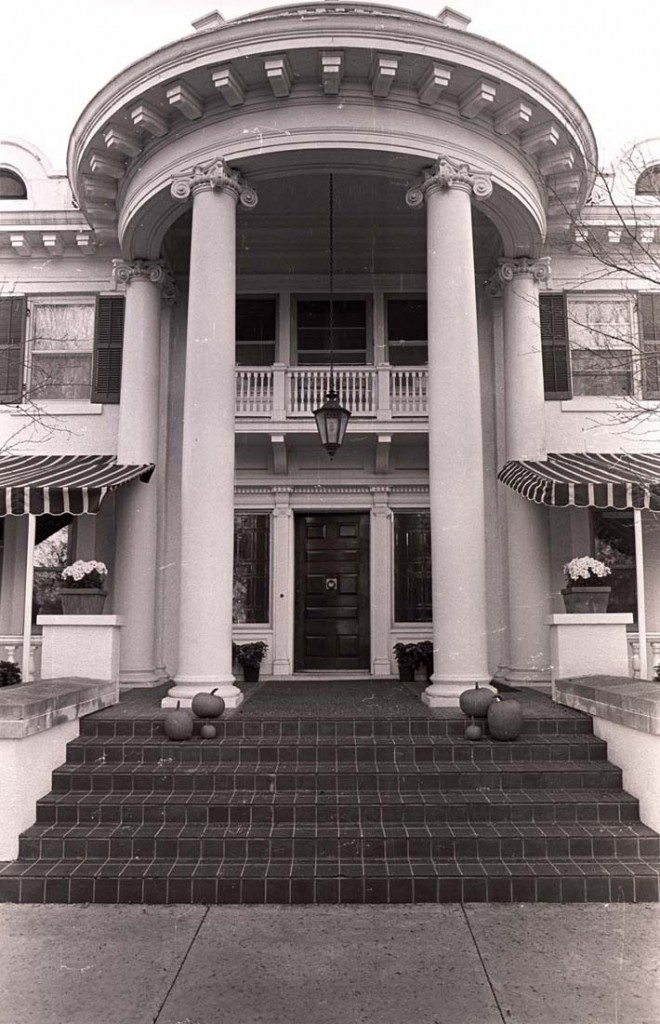
Pumpkins decorate the porch at the Chancellor’s residence, 1986.
University Archives Photos. Call Number: RG 0/22/11 1986 Negatives:
University General: Buildings: Chancellor’s Residence (Photos).
Click image to enlarge (redirect to Spencer’s digital collections).
Caitlin Donnelly
Head of Public Services
Melissa Kleinschmidt, Megan Sims, and Abbey Ulrich
Public Services Student Assistants
Tags: Abbey Ulrich, Autumn, Caitlin Donnelly, Chancellor's Residence, KU History, Megan Sims, Melissa Kleinschmidt, photographs, Pumpkins, Throwback Thursday, University Archives, University history, University of Kansas
Posted in Throwback Thursday |
No Comments Yet »
September 28th, 2015 Over four-hundred years ago, Miguel de Cervantes Saavedra conceived of one of the most enduring characters of western literature: a gentleman who, upon reading too many chivalric romances, determined to go into the world as Don Quixote and practice the art of chivalry.
The first volume of El Ingenioso Hidalgo Don Quixote de la Mancha was published in 1605, to immediate success. The book was quickly translated into many languages; Spencer Library houses many translations of this seminal work.
After the success of Don Quixote, Cervantes turned his attention to writing other works, particularly Novelas ejemplares and Viaje al Parnaso. However, in 1614, a spurious sequel to El Ingenioso Hidalgo Don Quixote de la Mancha appeared in print, by a rival writing under the assumed name of Alonso Fernández de Avellaneda. In response, Cervantes penned the authorized Don Quixote sequel, Segunda Parte del Ingenioso Cavallero Don Quixote de la Mancha, which appeared in print in late 1615. In honor of the four-hundredth anniversary of the publication of the second and final volume featuring Don Quixote and Sancho Panza, please enjoy some images of the gentleman knight as depicted through the ages and in different translations.
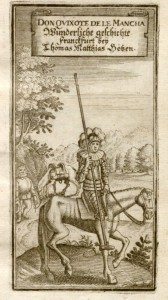
The knight errant: Frontispiece of Don Kichote de la Mantscha (Frankfurt, 1669). Special Collections, Call Number Cervantes X6. Click image to enlarge.
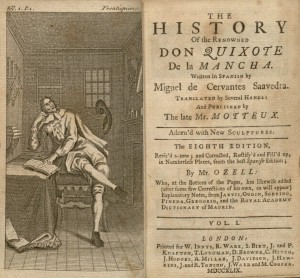
The dreaming hidalgo: Frontispiece and title page of The history of the renowned Don Quixote de la Mancha (London, 1749). Special Collections, Call Number Cervantes X3 v. 1. Click image to enlarge.
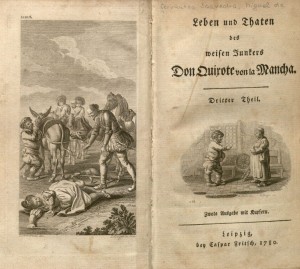
Acting chivalrously: Frontispiece and title page of Leben und Thaten des weisen Junkers Don Quixote von la Mancha (Leipzig, 1780). Special Collections, Call Number Cervantes Y110 v. 3. Click image to enlarge.
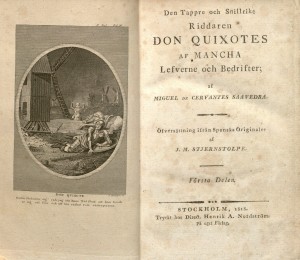
Fighting windmills: Frontispiece and title page of Den Tappre och Snillrike Riddaren Don Quixotes af Mancha Lefverne och Bedrifter (Stockholm, 1818). Special Collections, Call Number Cervantes Y49 v. 1-2. Click image to enlarge.
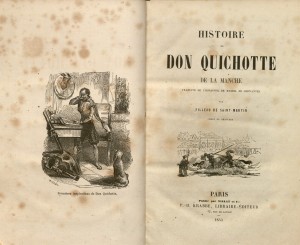
Reading chivalric romances: Frontispiece and title page of Histoire de Don Quichotte de la Manche (Paris, 1853). Special Collections, Call Number Cervantes Y45. Click image to enlarge.
Whitney Baker
Head, Conservation Services
Tags: Alonso Fernández de Avellaneda, Don Quixote, Miguel de Cervantes Saavedra, Sancho Panza, Whitney Baker
Posted in Special Collections |
No Comments Yet »
September 24th, 2015 Each week we’ll be posting a photograph from University Archives that shows a scene from KU’s past. We’ve also scanned more than 6,700 images from KU’s University Archives and made them available online; be sure to check them out!
Some of the images of campus in our photograph collection are actually postcards. The one shown below includes a message from KU student Frank Joste to his mother. If you’ve ever arrived at school for a new semester and realized that you forgot something at home, you can appreciate Frank’s predicament!
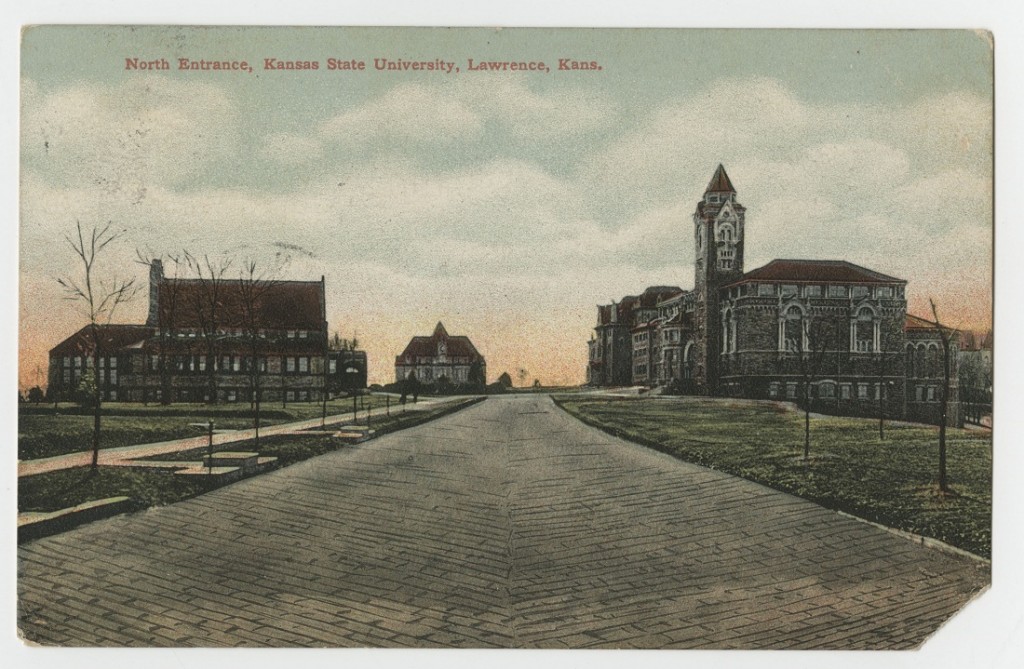
Postcard showing the North Entrance to KU, 1910.
The buildings, from left to right, are Spooner Library, old Blake Hall,
old Fraser Hall (mostly obscured) and Dyche Hall. We highlighted a
photograph with a similar view, from 1896, last December. Click image to enlarge.
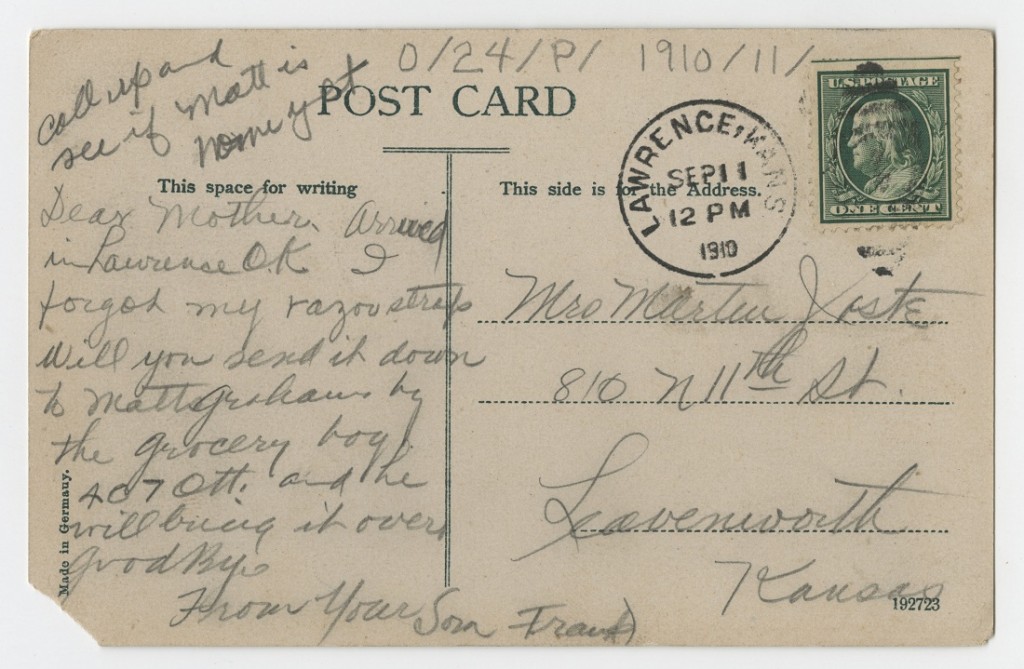
On the back of the postcard is student Frank Joste’s message
to his mother, mostly pertaining to a razor strap left at home.
University Archives Photos. Call Number: RG 0/24/P 1910 Prints:
University General: Campus Panoramas (Photos). Click image to enlarge.
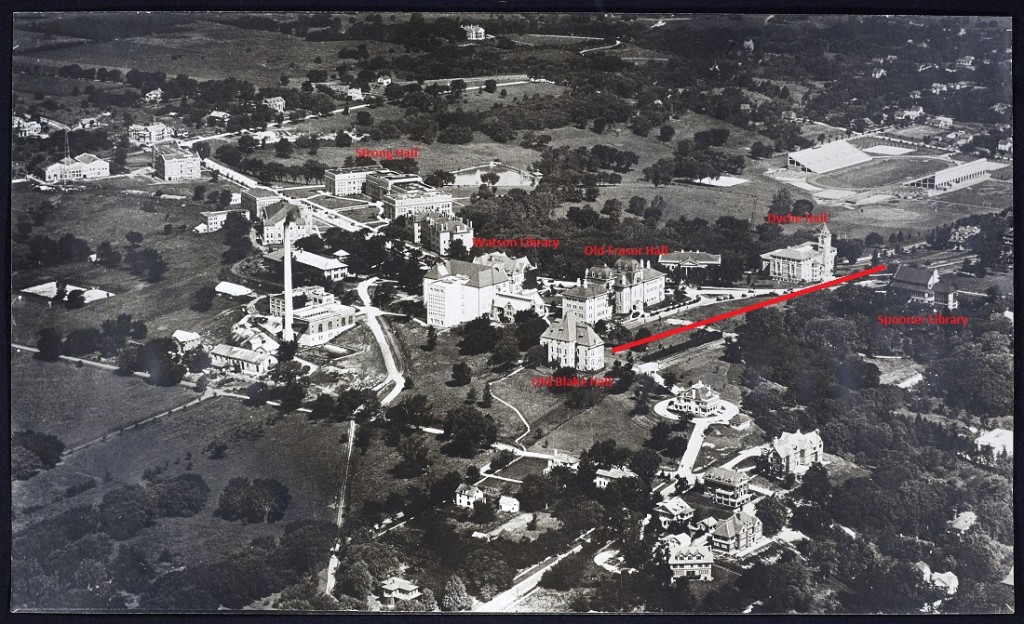
Campus aerial, probably taken in 1923 or 1924.
The red line, from right to left, roughly shows the view featured
on the postcard. The four buildings that can be seen are indicated, too.
Watson Library and Strong Hall had not yet been built in 1910,
but they are also marked on the photograph, as points of reference.
University Archives Photos. Call Number: RG 0/24/A 1920s Prints:
University General: Campus Aerials (Photos). Click image to enlarge.
Frank Lewis Joste (1884/5-1964) was born in Leavenworth, Kansas, to Martin (circa 1847-1916) and Miranda Caldwell (circa 1848-1938) Joske. Frank’s father was a German immigrant, army veteran, and long-time guard at the Leavenworth federal penitentiary. Frank studied engineering at KU from 1907 to 1911. Although he never graduated, he put his education to good use, apparently spending his entire career working as an engineer for Southwestern Bell, first in St. Louis and then in Fort Worth. Frank married Bertha May Martin (1889-1985) around 1917; the couple had one son, Martin William Joste (1917-1978).
Caitlin Donnelly
Head of Public Services
Melissa Kleinschmidt, Megan Sims, and Abbey Ulrich
Public Services Student Assistants
Tags: Abbey Ulrich, Blake Hall (Old), Caitlin Donnelly, Dyche Hall, Frank Joste, Fraser Hall (Old), KU History, Megan Sims, Melissa Kleinschmidt, Postcard, Spooner Hall, Throwback Thursday, University Archives, University history, University of Kansas
Posted in Throwback Thursday |
No Comments Yet »
September 21st, 2015 This is the fourth installment in what will be a recurring series of posts introducing readers to the staff of the Kenneth Spencer Research Library. Joining the Conservation Services unit in Summer 2015, Angela Andres is the new Assistant Conservator for Special Collections.
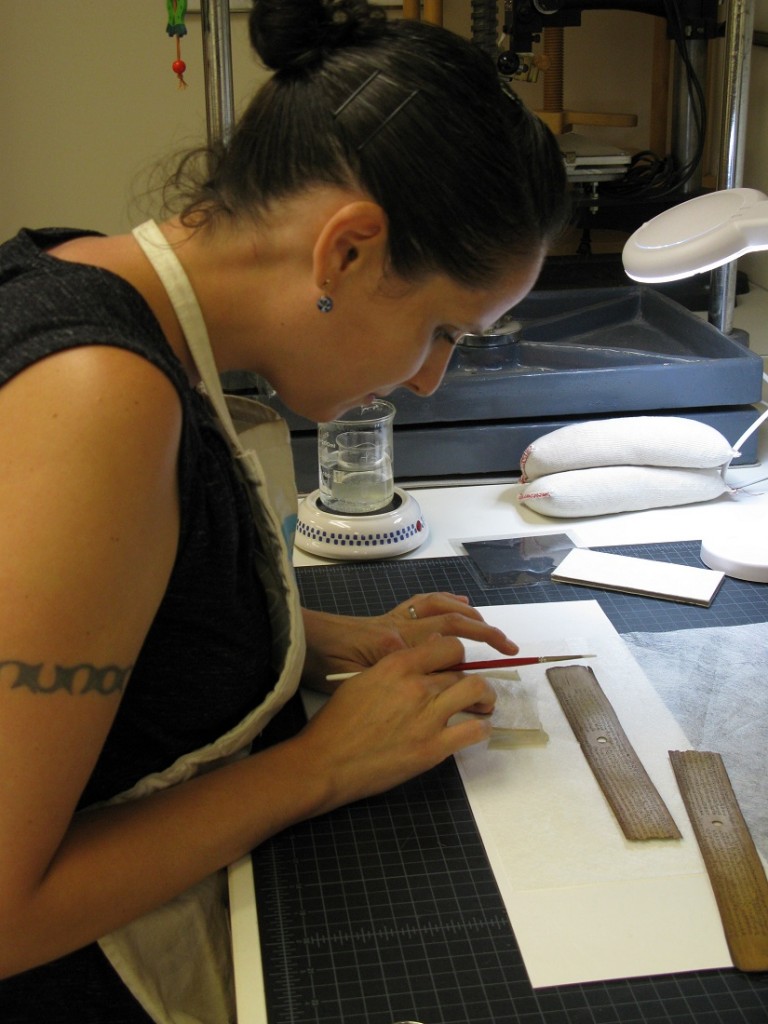
Angela hard at work in the conservation lab.
Click image to enlarge.
Where are you from?
My hometown is Belvidere, Illinois (the north central part of the state, near Rockford), but I came to Lawrence from New York City, where I’d lived for ten years. In between I lived in California, Philadelphia, and Madison, Wisconsin.
What does your job at Spencer entail?
I treat and preserve materials in Spencer’s collections to ensure their availability to both present and future library patrons.
How did you come to work as a conservator?
As a graduate student in library school, I had a work-study job in my school’s conservation lab. I had a background in studio art and book arts, and I realized that conservation was a field where my hand skills and my interest in library service could be combined.
What do you like most about being a conservator?
I greatly enjoy solving the unique problems presented by each treatment and project. Academic library collections are so diverse that every day is different and there is always something new to learn in the process of treating such varied materials.
What advice would you give to someone interested in becoming a conservator?
There are many types of conservators and different paths to a conservation career, but I’d suggest starting at the website of the American Institute for Conservation of Historic and Artistic Works (AIC), the national professional organization. There’s a section called “Become a Conservator” that is a great starting point.
What piece of advice would you offer a researcher walking into Spencer Research Library for the first time?
Just ask! The staff at Spencer are so friendly and will be happy to help you discover Spencer’s collections.
Angela M. Andres
Assistant Conservator for Special Collections
Tags: About Us, Angela Andres, Behind the Scenes, Careers in Libraries, Conservation Services, Meet the Staff
Posted in Conservation, Meet the Staff |
No Comments Yet »














